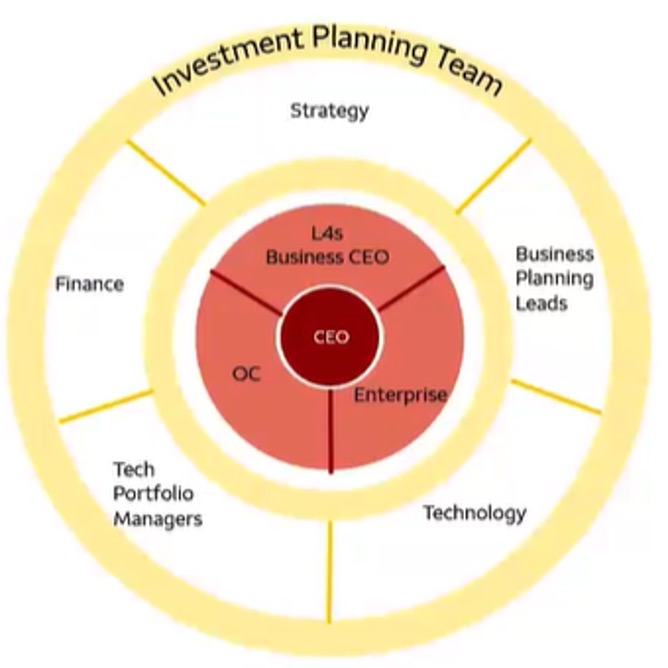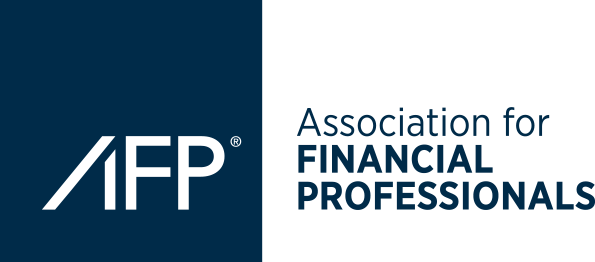Articles
All Aboard! Gaining Alignment Through the Strategic Investing Process
- By AFP Staff
- Published: 4/21/2025

A prominent financial institution’s two-category approach to technology investments provided a framework for ensuring stable operations while allowing it to pursue targeted advancements. However, the company saw it had room to improve its strategic investment planning process in areas of alignment, planning, prioritization, resource allocation and execution.
The AFP FP&A Case Study series is designed to help you build up key FP&A capabilities and skills by sharing examples of how leading practitioners have tackled challenges in their work and the lessons learned.
Presented at an AFP MegaCap roundtable, this case study contains elements that have been anonymized to maintain privacy and encourage open discussion.
Insight: A collective approach to strategic planning improves the quality of the plan, the flexibility when challenges arise and transparency across teams.
| Company Size: | Mega |
| Industry: | Financial services |
| Geography: | Global |
| FP&A Maturity Model: | Financial processes |
Background
This prominent financial institution operates across banking, investment and financial services, providing a comprehensive range of solutions, including personal and commercial banking, wealth management, mortgage lending and small business banking. Heavily regulated and process-driven, the bank has developed a strategic approach to technological investments.
It breaks technological investments down into two strategic investment categories:
- Projects needed to run the bank focus on maintaining and operating existing systems and processes. They cover routine maintenance, regulatory compliance and infrastructure updates essential to keeping bank operations stable and reliable.
- Projects needed to change the bank are forward-looking initiatives that aim to transform and improve the bank's capabilities. They focus on enhancing internal processes, improving employee efficiency, and elevating the customer experience through new technologies, product development and significant system upgrades.
The presenters of this case study are both financial analysts who are part of the Investment Planning Team (IPT). The company found that having the finance team's involvement only at the beginning or end of the planning process introduced friction to the overall effort and created an adversarial posture. Their involvement from the initial stages of planning ensures that each investment aligns with strategic goals and achieves the desired benefits, while also allowing for necessary course corrections and financial updates at any stage.
IPT sets financial guardrails that help manage resources effectively by integrating short-term and long-term budgeting, conducting thorough cost-benefit analyses and calculating ROI/NPV. Given IPT’s involvement in measuring success criteria once investments are undertaken, IPT’s involvement at the initial stages of the process to set benefit and KPI projections of potential investments is required.
Challenge
The bank's two-category approach to technology investments provides a structured framework for prioritizing and allocating resources, ensuring the stability of current operations while also allowing for the pursuit of advancements.
The company has a goal to improve its strategic investment planning process in four key ways:
- Improve the alignment of technology investments with long-term strategic goals.
- Ensure transparency and accuracy in the planning and prioritization process.
- Address challenges related to resource allocation and capacity planning.
- Enhance the efficiency and effectiveness of technology projects, including regulatory compliance and modernization efforts.
Approach
At the heart of the company's strategic initiatives is IPT, which ensures that technology investments are efficiently and effectively shepherded from initial ideation through to executive approval and eventually back to the teams responsible for implementation. This method ensures a comprehensive and multi-perspective planning and prioritization process.
The process begins with a thorough understanding of the project's requirements and potential impact, aligning with the company's strategic goals and integrating feedback from key stakeholders. IPT then works with the strategy team to ensure that each investment aligns with the company's broader objectives.
Once a plan is developed, IPT prepares executive-level materials and presents them to leadership, gathering feedback and making necessary adjustments. Finally, IPT ensures that the plans and resources are handed back to the teams that will execute the project, periodically reviewing and adjusting capacity allocations as needed to keep the project on track. This meticulous process not only enhances the efficiency and effectiveness of technology projects but also ensures regulatory compliance and modernization efforts are comprehensively addressed. IPT monitors projects over time, ensures communication, and iterates these steps as necessary.
Key Elements of the Investment Process
Key Partners and Roles
IPT works in collaboration with stakeholders through iterative feedback and prioritization discussions. This helps refine the investment roadmap and ensures that the most critical projects receive the necessary visibility resources, all stakeholders are informed, and the information flow to executives is smooth.
- Strategy Team: Ensures each investment ties back to the company's long-term goals.
- Business Planning Leads: Represent functional areas and advocate for their investment priorities. Portfolio leads manage work prioritization, and investment owners develop business cases aligned with strategic goals.
- Technology Team: Provides expertise on project feasibility, including labor, hardware, software and implementation requirements.
- Tech Portfolio Managers: Ensure accuracy and alignment of forecasts and people capacity planning.
- Finance Team: Validates benefit attributions, ensures financial accuracy, and plays a key role in pressure testing and prioritizing investments.

Strategic Alignment
The company ensures technology investments align with long-term strategic goals by strengthening partnerships, connecting to the long-term vision and increasing transparency.
- Strategic Priorities: Leadership prioritizes investments that directly support the company's long-term strategic goals.
- Transparency and Communication: The enterprise guides funding and priorities across business lines, optimizing resource allocation through clear communication and regular updates.
Planning and Execution
The process starts in July, with ongoing low-level planning and idea generation throughout the year. IPT deployed the following improvements over the prior process:
- Six-Quarter Roadmap: Detailed roadmap outlining deliverables and milestones. Ensures measurable progress and accountability.
- Capacity Planning: Detailed capacity planning to develop the project, including labor time and resource allocation. Ensures efficient use of resources and on-time delivery.
- Visibility and Transparency: Dashboards provide visibility into resource allocation and associated dollars. Ensures everyone knows their allotments.
Continuous Improvement
IPT is always looking for ways to strengthen collaboration between strategy, finance and business teams to improve planning and execution. By definition, IPT works with complicated, multi-year projects; dedicating a team member as a lead point of contact for the duration of a project ensures continuity of thought, relationships and communication. The POCs have been able to provide ideas for project improvement, whereas before, they would disengage after initial review. They have also been able to share their learnings with other members of IPT.
Outcome
The investment planning process has improved each year as more stakeholders are invited to the table throughout all stages of the process. Historically, IPT has had a siloed presence, with finance components being handled separately from strategy, product and business efforts. By involving all partners at every stage, IPT is now better equipped to guide the process. This ensures that all functional groups can witness, vet, challenge and agree on the process parameters.
IPT and the new process have moved the company from a project-list approach to a strategic initiative review. The strategy team provides an overarching view to ensure long-term alignment, finance and business planning leads vet and prioritize initiatives to ensure they fit within the strategic framework while meeting financial targets, and technology supports the process. There is a lot of negotiation among all the parties!
The IPT continues to navigate process complexities, identifying key challenges and developing targeted solutions, including the following:
Estimating Technology Resources
- Problem: Difficulties in accurately estimating the time and resources required for technology projects often led to discrepancies between initial estimates and actual needs, causing delays and budget overruns.
- Approach: The finance team works closely with technology and business teams to validate assumptions and ensure realistic projections.
Resource Allocation
- Problem: Ensuring the right skill sets were available for specific projects was challenging. The team had to frequently adjust contracts and hire new resources to meet the technical requirements of different systems.
- Approach: The team instituted capacity planning, using managed and contract resources to provide flexibility in hiring the right skill sets as needed.
Managing Delays and Reprioritization
- Problem: The project timeline was subject to constant reprioritization and delays, often caused by external vendors or availability of specific technical expertise, often related to Resource Allocation.
- Approach: Planning conversations about the portfolio of projects across business units now take place early in the process, ensuring the right resources are in place and minimizing delays.
Budget Constraints
- Problem: Working within a flat or declining budget was a significant challenge. Tough decisions regarding project prioritization and cost optimization had to be made without compromising on essential deliverables.
- Approach: Cost estimates are pressure tested, and learnings from past projects can help, but forecasts are never perfect. Prioritization and negotiation are key, and finance helps identify areas for potential cuts or reallocations. “We help them find the money in operations, or we go to accounting and see if there is trapped capital and hidden reserves in the balance sheet,” said the presenters.
Integration of AI
- Problem: Implementing AI into existing systems, such as branch procedures, required careful planning and validation to ensure accuracy and efficiency.
- Approach: Extensive pressure testing and validation of business metrics.
Benefit Attribution
- Problem: How to accurately attribute benefits to specific investments and track ROI.
- Approach: Tracking ROI is difficult and often involves qualitative measures and estimates. The company may use “post-mortem” discussions, A/B testing and pilots to help understand impacts. It also helps to evaluate the sum of the investment portfolio instead of individual projects. For example, every business case is built on a positive outcome, but if everyone hits their goals, the sum total would be more than the company's capacity to handle!
- This immediately improves future business cases. “We have developed some expertise in tech finance who can learn from past projects and pressure test the assumptions,” said the presenters.
Copyright © 2025 Association for Financial Professionals, Inc.
All rights reserved.

